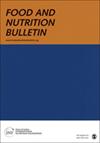1999 年至 2018-19 年墨西哥人口贫血和缺铁趋势概览
IF 1.6
4区 医学
Q3 FOOD SCIENCE & TECHNOLOGY
引用次数: 0
摘要
背景:尽管墨西哥为解决弱势群体贫血和微量营养素缺乏问题制定了多种计划,但在降低贫血和微量营养素缺乏患病率方面的进展却停滞不前。在墨西哥,通过全国健康与营养调查ENSANUT(西班牙语缩写)进行人口层面的贫血监测。目的:概述在COVID-19大流行之前,1999年至2018-19年间墨西哥人口的贫血和缺铁(ID)趋势。在有数据的情况下,从1999、2006、2012、2016和2018-19年的ENSANUT中提取了1至99岁参与者的贫血、缺铁性贫血和缺铁性贫血(IDA)数据。各次调查(1999-2018 年)的血样采集方法相似,其中毛细管滴血使用 HemoCue 估算 Hb,血清血样用于测量铁蛋白和 C 反应蛋白浓度。在老年人(≥60 岁)中,贫血患病率呈上升趋势。贫血从 1999 年到 2012 年逐步下降,但从 2016 年到 2018-19 年与 2012 年相比有所上升。相比之下,IDA从2006年到2018-19年有所下降,主要是在儿童中,而IDA在此期间没有变化。在老年人中,IDA患病率在一段时间内保持不变。结论:1999年至2018-19年间,ENSANUTs贫血患病率的变化趋势并没有模仿同期IDA的下降趋势。其他非因果因素似乎在血红蛋白测量的变化中发挥了重要作用。本文章由计算机程序翻译,如有差异,请以英文原文为准。
Overview of Trends in Anemia and Iron Deficiency in the Mexican Population From 1999 to 2018-19
Background:Despite the emergence of diverse programs in Mexico to address anemia and micronutrient deficiencies in disadvantaged groups, progress on reducing their prevalence has stagnated. In Mexico, anemia surveillance at the population level is conducted through the National Health and Nutrition Survey ENSANUT (for its acronym in Spanish).Objective:To overview the trends in anemia and iron deficiency (ID) from 1999 to 2018-19 in the Mexican population before COVID-19 pandemic.Methods:Data from five nationwide surveys in Mexico were used. Where available, data on anemia, ID, and ID anemia (IDA) were extracted from ENSANUTs 1999, 2006, 2012, 2016, and 2018-19 in participants from 1 to 99 years old. Blood sample collection methods were similar across surveys (1999-2018) where capillary drop blood was used to estimate Hb using a HemoCue and serum blood samples to measure ferritin and C-reactive protein concentration.Results:The trend in anemia prevalence shows a U-shape from 1999 to 2018-19 in <60 years old. In older adults (≥60 years), an increasing trend was observed. Anemia declined progressively from 1999 to 2012 but increased from 2016 to 2018-19 in comparison with 2012. In contrast, ID declined from 2006 to 2018-19, mainly in children, while IDA did not change over this period. In older adults, ID prevalence remained constant over time.Conclusions:The shifting trend in anemia prevalence across ENSANUTs 1999 through 2018-19 did not mimic the decreasing trend of ID over the same period of time. Other noncausal factors seem to play an important role in the variability of hemoglobin measurements.
求助全文
通过发布文献求助,成功后即可免费获取论文全文。
去求助
来源期刊

Food and Nutrition Bulletin
工程技术-食品科技
CiteScore
4.10
自引率
0.00%
发文量
31
审稿时长
18-36 weeks
期刊介绍:
The Food and Nutrition Bulletin (FNB,) is a peer-reviewed, academic journal published quarterly by the Nevin Scrimshaw International Nutrition Foundation. The Journal is one of the leading resources used by researchers, academics, nutrition policy makers and planners in over 125 countries to obtain the most current research and policy information related to nutrition in developing countries.
 求助内容:
求助内容: 应助结果提醒方式:
应助结果提醒方式:


